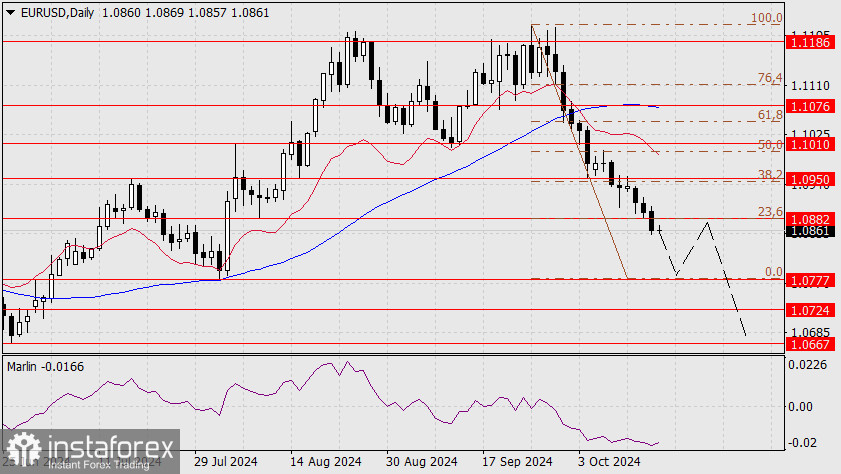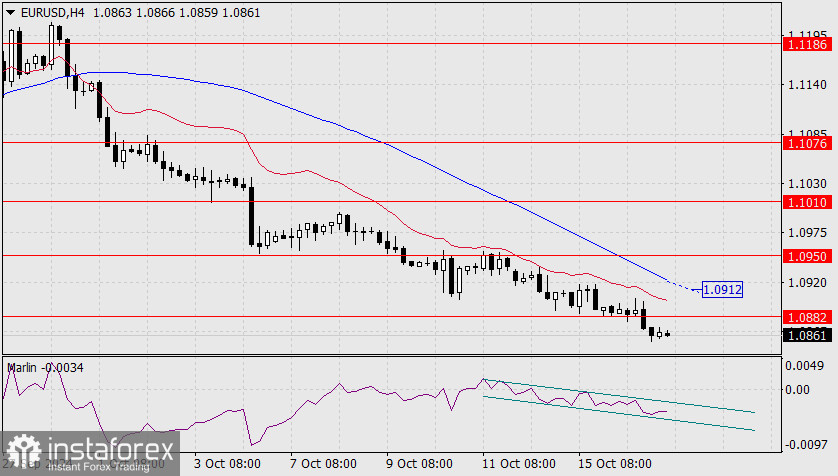The euro is positioning itself as low as possible ahead of today's European Central Bank meeting results. Technically, the level of 1.0777 is already in play and could be reached relatively quickly if general market expectations are not undermined – meaning the central bank lowers the rate by 0.25% and doesn't postpone the next cut "for six months." Considering the ECB's concerns over internal inflation due to rising wages and not-so-weak performance in the real sector, Lagarde's tone might not be very dovish.

The technical outlook for the euro is dire. However, reaching the support level of 1.0777 could change things. Nonetheless, if this support is hit, it will likely be for a reason, which means any correction from 1.0777 is unlikely to be deep. A price return to 1.0882, coinciding with a 23.6% correction, could occur. Thus, our main scenario for the coming days is a decline to 1.0777 followed by a corrective rise.

On the four-hour chart, the signal line of the Marlin oscillator is developing within a narrow descending channel, and such a pattern cannot last long. The ECB's decision on monetary policy will push Marlin out of this comfortable range. Since the overall downward movement is steady without signs of reversal, the oscillator's breakout and the price will most likely occur downward.
Can the ECB push the price upward? It's possible. There's not much distance from the current price to the MACD line on the H4 chart (1.0912), only 50 pips. Price consolidation above this level would prepare it for breaking through 1.0950. But in that case, the ECB would be deceiving the market. History shows, however, that the ECB does not consider misleading the market about the euro to be deceitful.
 English
English 
 Русский
Русский Bahasa Indonesia
Bahasa Indonesia Bahasa Malay
Bahasa Malay ไทย
ไทย Español
Español Deutsch
Deutsch Български
Български Français
Français Tiếng Việt
Tiếng Việt 中文
中文 বাংলা
বাংলা हिन्दी
हिन्दी Čeština
Čeština Українська
Українська Română
Română

